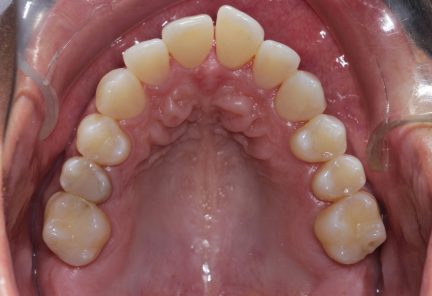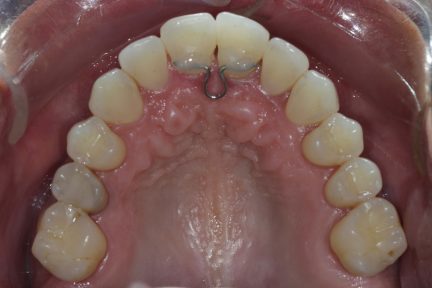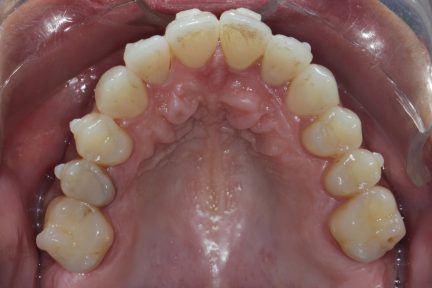Treatment Summary
Patient Information
- Age: 52
- Gender: female
- Invisalign Submission Option: Invisalign Full
Total Treatment Time
- 26 months
Number of aligners
- Maxillary: 33 + 22 = 55
- Mandibulary: 33 + 22 = 55
Aligner Wear time
- 15 days - 10 days
Retention
- Maxillary: Fixed/Bonded
- Mandibular: Other clear
Results achieved
- Class I relationship maintained
- Functional canine guidance on both sides
- Normal overjet and overbite achieved
- Overjet improved
- Midlines coincident
- Proper axial inclination of incisors
- Arches aligned and coordinated
- Arch form improved
- Aesthetic smile line was achieved
- Harmonic arches were achieved
Comments
- Because of mobility and mesial deep bone loss, the patient received advice from an implantologist to extract tooth 2.1 and place an implant
- We decided to first treat orthodontically and align all teeth, to give her a proper stable occlusion especially 2.1, so, even if she loses the tooth in the future, the implant can be placed in a favorable desirable position.
- Two stages and IPR were needed to completely resolve the crowding of lower incisors, especially tooth 4.2
- IPR and retraction was needed to align and correct the flared upper anterior teeth
- Because of the anterior bone loss, we took our time with the correction
- Endodontic treatment was performed on tooth 2.1 throughout the treatment, and patients' bone loss condition began to improve
- Heavy contacts on anterior were evaluated during the treatment with our focus on tooth 2.1
- Occlusal adjustments on the palatal surface were performed as needed
- At the end of the treatment, the black triangle between 1.1 and 2.1 was improved aesthetically by means of restoring the mesial surfaces using composite resin which closed the remaining gap
- With the correction of the anterior occlusion, the bone loss on the mesial surface of tooth 2.1 and mobility improved a lot
- As for now, the implant of tooth 2.1 is on hold. We hope for forever
- We chose to place a palatal fixed retainer between #1.1 and #2.1 together with clear vacuum-formed retainers for now (Vivera will be done later)
ClinCheck treatment plan
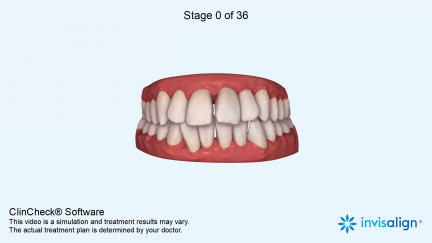

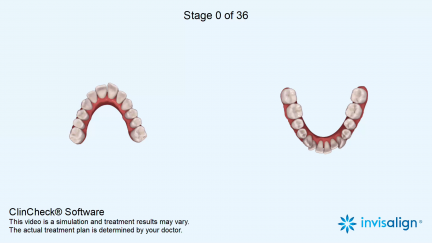
Smartforce features
- Optimized rotation attachment (G3) on Buccal 1.4 (UR4), Buccal 2.3 (UL3), Buccal 2.4 (UL4), Buccal 2.5 (UL5), Buccal 4.4 (LR4), Buccal 4.5 (LR5), Buccal 3.3 (LL3), Buccal 3.4 (LL4), Buccal 3.5 (LL5)
- Optimized extrusion attachment (G3) on Buccal 4.2 (LR2)
- Optimized root control attachments (G4) on Buccal 1.3 (UR3), Buccal 1.5 (UR5), Buccal 2.2 (UL2)
- Optimized deep bite attachments for anchorage (G5) on Buccal 4.5 (LR5)
- Pressure areas (G5) on Buccal 2.2 (UL2), Lingual 2.2 (UL2)


